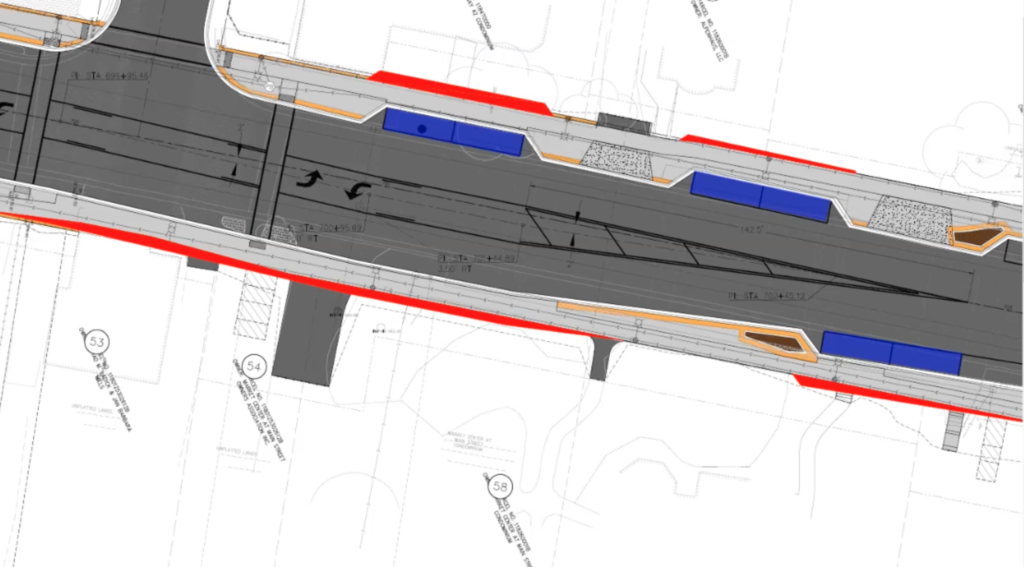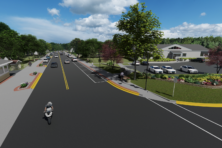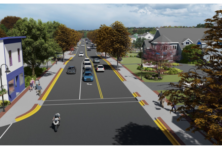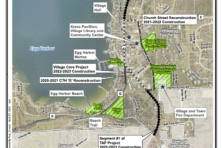Egg Harbor on the Brink of Borrowing for Highway Project
- Share
- Tweet
- Pin
- Share

The Village of Egg Harbor is nearing the point of borrowing the millions it will cost to make the long-planned Highway 42 improvements through the heart of the village.
The borrowing comes in the form of the sale of general obligation bonds, which the village board moved closer to finalizing during a presale review at a special meeting March 29.
The village is looking at borrowing up to $7,500,000 over a term of 20 years, knowing the number could be adjusted during the next couple of weeks. That amount includes the Highway 42 improvements ($7,058,460), the purchase of some fire turnout equipment ($45,000), the reconstruction of the parking lot at the Bertschinger Community Center ($100,000) and a contingency of $255,891.
The total project cost for the highway improvements would be $10,366,700 if the village had not received grants to defray the cost: $1,382,000 previously granted for the TAP portions of the project, north and south of the core area, and then the recently awarded Congestion Mitigation & Air Quality (CMAQ) grant in the amount of $1,740,480 for the core area. The total amount is further reduced by $85,760 from the County of Door for the County E portion (from Harbor School Road to County E).
Village administrator Megan Sawyer told the trustees that they also have an opportunity to apply for another grant associated with the energy-efficient lighting they intend to use for the project.
The planning process for the highway-redevelopment project – which began in 2015 but was delayed a couple of times – effectively ended with the village board March 8 and a plan that restored some of the on-street parking that had initially been removed from the core area.
The state Department of Transportation is milling and resurfacing about seven miles of Highway 42, from Rainbow Ridge Court south of the village to Bluff Lane in the Town of Gibraltar – a project scheduled for 2024. The Village of Egg Harbor is piggybacking its improvements with the state’s work.

The village’s portion of the project is to replace and enhance aging and deteriorating infrastructure while enhancing safety, walkability, connectivity, parking and aesthetics. The improvements were intended to ease congestion and calm traffic on a state road that passes through the village but over which the village has no authority.
The trustees were working March 29 with the latest probable costs for that final project, updated to allow for inflation and changes – such as the specialized seeder soil for the 51 trees that will be planted in the project’s core area. About $300,000 is built into the price for that, but trustee Ken Mathys said he believed that price was overstated by more than half.
It’s those tweaks that will be made during the next couple of weeks before the bond amount is finalized. Right now, the total $7.5 million has many “overstatements,” Sawyer said, to arrive at a conservative estimate.
“We have some time to continue to analyze these numbers and reduce the actual borrow amount before we pull the trigger in May,” she said.
May 1 is the date by which they need a firm number, said Joe Murray, senior municipal adviser with Ehlers, the village’s public-finance adviser. The bonds will be sold May 8.
Murray said they’d have time to invest the borrowed money before bills became due. Sawyer said they don’t have a solid date for bidding the project at this time, but she believed it would be this fall.
If the estimates come in below the borrowed amount, the village could use the excess on other road-related projects or to pay down the debt to give property owners a break.
The village will levy from property-tax owners what it needs to make the annual debt payments. According to tables provided by Ehlers, the village’s mill rate or tax rate – the rate multiplied by the assessed value of a property to get the amount of taxes owed – was $2.54 for this 2023 tax year. If the full $7.5 million were borrowed, the new rate would be $3.52, or an additional $215 annually for a $200,000 home. The new tax rate would not take effect until 2024.
“We are hoping we can come in and show a lower tax impact,” Murray said, by May 1, when the village finalizes the borrowing amount.
The Wisconsin Constitution limits municipal and county debt to no more than 5% of equalized value. A Debt Capacity Analysis that Ehlers provided showed the village’s existing debt is $11,912,409, or 49% of its ceiling of $24,135,160. After the bond issue, that debt would rise to $18,275,937, or 76% of the limit – an amount that village president John Heller pointed out exceeded the threshold of 60% that the village had set. The village would return to that desired range in 2026, according to the schedule.
The trustees approved four separate resolutions during the meeting, all pertaining to the pending bond sale. Three of those were initial authorizations – one for up to $7,355,000 for the street improvement, the second for up to $45,000 for the fire turnout equipment, and the third for up to $100,000 for the parking lot – with the final resolution authorizing up to $7,500,000 in bonds for the whole project.
“These are not-to-exceed amounts,” Murray said. “They’ll be adjusted before May 1.”





